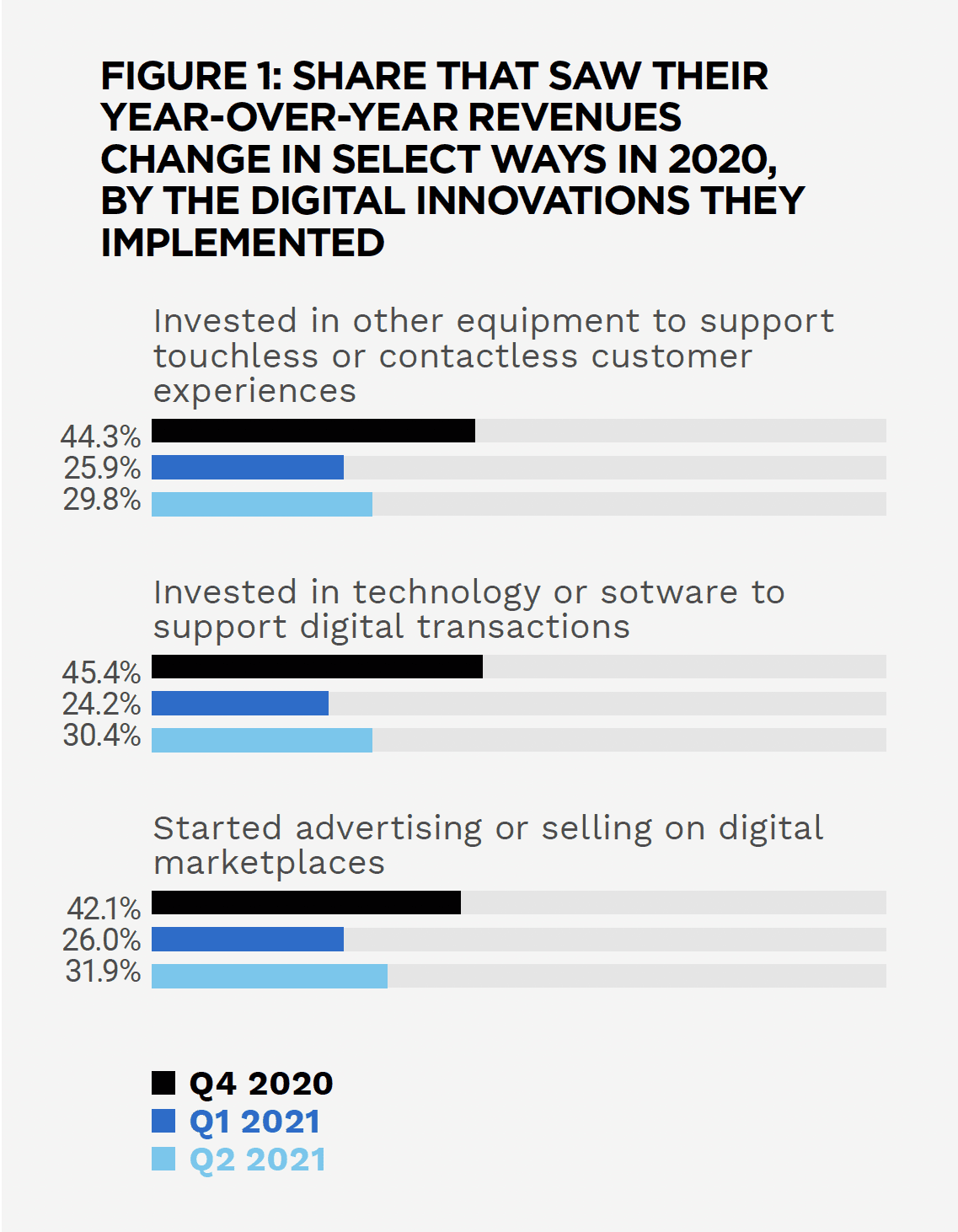Small to mid-sized businesses (SMBs) are the growth engines of the United States economy. There are approximately 31.7 million SMBs in the U.S. — they account for 64 percent of new job openings in the economy and represent more than 99 percent of all businesses nationwide. Despite their might, the pandemic resulted in the closure of nearly 200,000 more companies in 2020 than in prior years.
Consumers continue to trend toward buying online across all markets, meaning that implementing consumers’ payment preferences will be key to a successful holiday shopping season for SMBs. eCommerce is expected to increase by approximately 15 percent year over year to reach at least $210 billion in spending this holiday season, while holiday shopping is expected to grow 7 percent to reach $1.3 trillion spent during the months of November and December, according to a recent report. Rising vaccination rates are easing consumers’ health concerns as well and encouraging citizens to spend more on in-person services.
The following Deep Dive examines how SMBs can welcome customers safely back into their storefronts this holiday season by adopting contactless payment capabilities and digitizing accounts payable (AP) and accounts receivable (AR) operations.
Obstacles SMBs face to payments innovation
Manual payment methods like paper checks have historically been the go-to forms of payment for SMBs. The accelerated digitization of the payments space has highlighted such antiquated processes’ shortcomings, however, particularly when it comes to delayed settlements. Recent PYMNTS research found that it takes only one late payment from a large customer to almost immediately have a negative impact on working capital and cash flow, a challenge made even more difficult for the 74 percent of SMBs that experienced delayed payment volumes during the pandemic. It should also be noted that cash flow was the greatest concern for one-third of SMBs that have closed.
Small businesses face an uphill battle when competing with large corporations in pricing, advertising and technological infrastructure. Modernizing AP and AR systems can help to close the gap between small and large companies, but many SMBs have the misconception that their IT resources are unequipped to handle digitization. In fact, 60 percent of SMBs cite these assumed inefficiencies as a main obstacle they would expect to cross when automating AP and AR systems — approximately two to three times the share of larger businesses that hold similar concerns. Fifty-five percent of SMB leaders share a similar outlook on the capabilities of their current technology and view infrastructure-related issues as hindering innovation.
In-store logistics are a high priority technological concern amid consumers’ gradual return, with business owners scrambling to implement health measures that are both inclusive and safe. While one-third of SMBs have voluntarily reinstated COVID-19 mandates such as mask requirements, owners of microbusinesses with 20 employees or fewer are hesitant to enforce such restrictions, most likely to avoid the extra costs associated with employee vaccine requirements and potential conflicts with customers.
Investing in digitization, automation to drive revenue, generate positive customer experiences
 The digitization of payments processes will be essential to ensure both customers’ safety and SMBs’ successes this holiday shopping season. Sixty-two percent of SMBs said that the pandemic required them to change their digital transformation plans in 2021 — a 2 percent increase from a year prior. Evidence shows that an upward trend is forming, with 38 percent of respondents claiming they will invest more funds into digital transformation in 2022 than they did in 2021.
The digitization of payments processes will be essential to ensure both customers’ safety and SMBs’ successes this holiday shopping season. Sixty-two percent of SMBs said that the pandemic required them to change their digital transformation plans in 2021 — a 2 percent increase from a year prior. Evidence shows that an upward trend is forming, with 38 percent of respondents claiming they will invest more funds into digital transformation in 2022 than they did in 2021.
Regardless of where and how consumers choose to shop, they are increasingly choosing digital-first approaches such as buy online, pickup in store (BOPIS) and mobile order-ahead, often choosing to pay with their own devices through mobile wallets, QR codes or other contactless methods. Nearly half of U.S. consumers now use such channels to make retail purchases.
AR and AP automation can empower SMBs to accept a wider array of payment methods, an important undertaking amid the shifting way consumers like to shop. Approximately two-thirds of SMB owners expressed favor toward digitization, claiming it allowed them to increase automated clearing house, PayPal and credit card payments. Real-time payments have also seen significant growth in the SMB marketplace, as 56 percent of such executives say they have used this payment method more frequently because of digitization. This collection processes innovation is done with the intent to enhance the customer experience and appeal to a broader demographic of consumers as well as improve cash flows amid pandemic-related economic disruptions. More than 44 percent of Main Street SMBs saw an increase in their revenue stream after investing in equipment to support contactless customer experiences.
While contactless payments significantly decrease the need for physical contact, thus reducing the potential viral transmission, additional precautionary measures may help customers feel more comfortable when entering retail stores this holiday season. In May 2021, 85 percent of SMBs were operating at full capacity. That number had dropped to 63 percent as of August due to precautionary measures being reinstated. An estimated 35 percent of SMB owners claimed they would require proof of vaccination for any patrons wishing to remove their masks. To avoid potential conflict with unvaccinated customers, small business owners expressed the desire for federal and state intervention in COVID-19 safety protocols. Kathryn Petralia, co-founder of small business lender Kabbage, explained that such mandates encouraged and reinforced business executives’ desires to protect themselves as well as their customers and employees.

